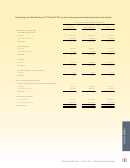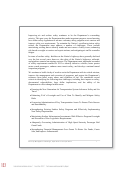Performance And Accountability Report - Fiscal Year 2013 - Federal Aviation Administration - U.s. Department Of Transportation Page 9
ADVERTISEMENT
 1
1  2
2  3
3  4
4  5
5  6
6  7
7  8
8  9
9  10
10  11
11  12
12  13
13  14
14  15
15  16
16  17
17  18
18  19
19  20
20  21
21  22
22  23
23  24
24  25
25  26
26  27
27  28
28  29
29  30
30  31
31  32
32  33
33  34
34  35
35  36
36  37
37  38
38  39
39  40
40  41
41  42
42  43
43  44
44  45
45  46
46  47
47  48
48  49
49  50
50  51
51  52
52  53
53  54
54  55
55  56
56  57
57  58
58  59
59  60
60  61
61  62
62  63
63  64
64  65
65  66
66  67
67  68
68  69
69  70
70  71
71  72
72  73
73  74
74  75
75  76
76  77
77  78
78  79
79  80
80  81
81  82
82  83
83  84
84  85
85  86
86  87
87  88
88  89
89  90
90  91
91  92
92  93
93  94
94  95
95  96
96  97
97  98
98  99
99  100
100  101
101  102
102  103
103  104
104  105
105  106
106  107
107  108
108  109
109  110
110  111
111  112
112  113
113  114
114  115
115  116
116  117
117  118
118  119
119  120
120  121
121  122
122  123
123  124
124  125
125  126
126  127
127  128
128  129
129  130
130  131
131  132
132  133
133  134
134  135
135  136
136  137
137  138
138  139
139  140
140  141
141  142
142  143
143  144
144  145
145  146
146  147
147  148
148  149
149  150
150 We also began work on Data Communications (Data Comm) trials. Data Comm supplements today’s analog, voice-only, air-to-
ground communications system with a digital message system. The sending and receiving of digital instructions to and from pilots
will increase overall system efficiency, while reducing the likelihood of hearback and readback errors. We plan to start initial
operations of Data Comm in equipped control towers beginning in 2016.
We also continue to make progress with implementation of the En Route Automation Modernization (ERAM) system, which
replaces the 1970s era En Route Host computer and backup system used at 20 FAA Air Route Traffic Control Centers nationwide.
ERAM is one of the most complex, challenging, and ambitious systems deployed by the FAA in recent times. In effect, the
transition to ERAM represents a live transplant of the “heart” of today’s air traffic control system while continuing safe and
efficient flight operations for the flying public. As ERAM evolves, it will provide benefits for users and the flying public by
increasing air traffic flow and improving automated navigation and conflict detection services, all of which are vital to meeting
future demand and preventing gridlock and delays. Our goal was to have ERAM in initial operation at all 20 locations by the end of
2013. However, due to sequestration, this will not occur until 2014.
As part of the financial flexibility that Congress gave us earlier this year to mitigate the worst impacts of the sequester (namely,
employee furloughs for our entire workforce), we were able to restart the Metroplex work that had been put on hold. Our
Metroplex initiative involves optimizing aircraft routes in major metropolitan areas that have one or more airports. The airspace
above these airports is among the most congested nationwide. Our individual Metroplex projects are highly collaborative and must
include our operational air traffic control personnel. Prior to the congressional action, the planned furloughs under the sequester
required us to postpone new design and development efforts, and recall air traffic controllers and managers back to their duty
stations. Air traffic controllers have now returned and are applying their needed airspace expertise to all Metroplex efforts. In
addition, we have restarted the collaborative process with airlines and the many other stakeholders who are all working together
to improve congested airspace over busy cities that have multiple major airports. We were able to do this in the following seven
Metroplex areas where the work will continue, including: Washington, D.C., Northern Texas, Charlotte, Northern and Southern
California, Houston and Atlanta.
There is much more to NextGen. For more information, go to Additionally, NextGen accomplishments and
highlights also appear on pages 14–15 and 17–19 of this document.
FY 2013 PERFORMANCE HIGHLIGHTS
NEXT LEVEL OF SAFETY.
This year we met our domestic commercial aviation fatal accident safety goal. Although we met our
goal with our U.S. registered carriers, the Asiana crash in San Francisco in July, which involved a foreign carrier, is a somber
reminder of the importance of constant vigilance in the area of aviation safety world-wide. Reducing general aviation (GA)
fatalities continues to be a challenge. More than three-quarters of GA fatal accidents are related to human factors. In addition,
many GA accidents occur in Alaska, where the state’s topography and extreme weather present unique safety challenges to pilots.
In the area of commercial space safety, we maintained our outstanding record, with no fatalities, serious injuries, or significant
property damage from launches.
A summary of these performance results is presented in the Management’s Discussion and Analysis on page 26. Detailed
information about each of our safety performance metrics begins on page 44 of the Performance Results section.
7
|
|
Federal Aviation Administration
Fiscal Year 2013
Performance and Accountability Report
ADVERTISEMENT
0 votes
Related Articles
Related forms
Related Categories
Parent category: Business









